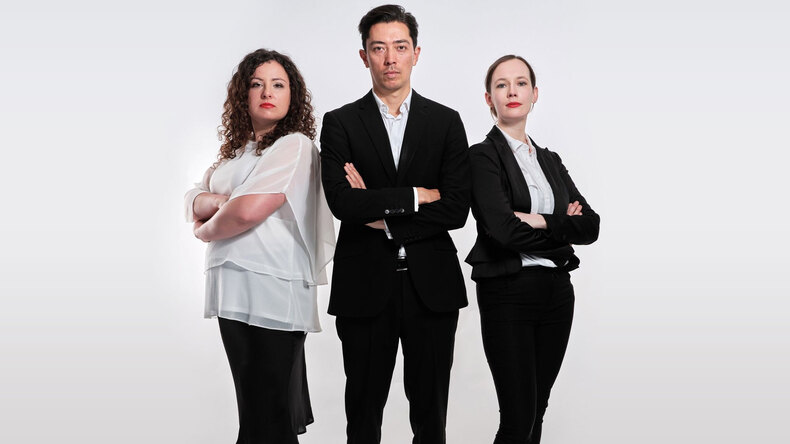Ghost Trio (2021)
Ghost Trio was founded in mid-2019 as one of Gabriela Glapska’s PhD recital projects. Having quickly realised that they immensely enjoy playing together, they decided to continue working as a trio. All three of them are accomplished soloists and chamber musicians with diverse backgrounds. Despite their recent formation as a trio, they have already gained reputation as one of the most refreshing and enjoyable chamber groups in New Zealand.Flyer
Read More
View Programme Notes
In association with Chamber Music New Zealand
Sponsored by Pure Print
Review of Ghost Trio:
Trio of Ghosts bring life to Baycourt
THERE were no mediums needed to enjoy Tauranga Musica’s final season concert with the spirited performances of Ghost Trio on Sunday afternoon at Baycourt.
With elan and unfailing attention to musical detail, the trio of Monique Lapins (violin), Ken Ichinose (cello) and Gabriela Glapska (piano) presented a diverse collection of works with all the energy and emotion befitting of their collective professional teaching and performance careers.
Haydn’s 1767 Piano Trio in G major whetted the audience appetite with its delicacy, restraint and humour. An earlier Haydn work, it celebrated Classical period melody, embellishment and clarity, while harking back to the Baroque, especially in its third movement Largo which could have been penned by Handel. The performers managed both styles with equal skill and knowledge, with special plaudits going to Glapska at the piano for deft execution of the many ornamental features across all movements.
In sharp contrast was a short work by New Zealand’s Josiah Carr, time and glue, which presented an atmospheric collection of less-frequently used string techniques in a memory-themed work that exploited both tension and silence.
To round off the first half, the trio presented Faure’s 1922 Piano Trio in D minor which held the audience enthralled throughout. Elegant cantabile melodies exploring extended harmony and whole tone scales skirted the boundary between the diatonic and the polytonal, but always imbued with Faure’s mastery of melody.
Unlike the level-headed Haydn, this work offered the performers a chance to channel tragedy and drama, reminiscence and regret, and special mention ought to be made of Ichinose’s great warmth throughout, but especially in the folk-themed 2nd movement, where he and the violin built much tension and anticipation, restlessly climbing higher and higher.
The second half was dedicated to 1883 Dvorak’s Piano Trio in D minor, which in every way was the perfect choice to bring all that had been previously demonstrated back in front of the audience. Its epic opening movement was perfumed with such intensity that none could resist being drawn in by it; only doing so because of the trio’s mastery of the work.
The second movement was unashamedly Slavonic with the robust rhythmic complexity associated with eastern Europe at the time. The trio never skipped a beat, despite the nature of the syncopation being so potentially confounding, and an enchanting vitality remained throughout.
Fusing lyrical counterpoint with a melodic style foreshadowing Rachmaninoff and the like, the third movement demonstrated Dvorak’s forward-looking side with extended harmonies and chromatic modulations. Elegiac in nature, but by no means sombre, the audience enjoyed its longing qualities and the chance for reflection that it offered.
Finally, it was a return to rhythmic flash and dash in the fourth movement, where Lapins’ violin sung and soared with all the joy and sadness the work demanded. Such was her obvious excitement, she stamped her foot as if to provide relief from her unbounded energy – a perfect expression of all the vitality being brought to the work by the trio, with the final cadence ending an amazing afternoon journey for all.
- By Leon Gray
Previous concert
